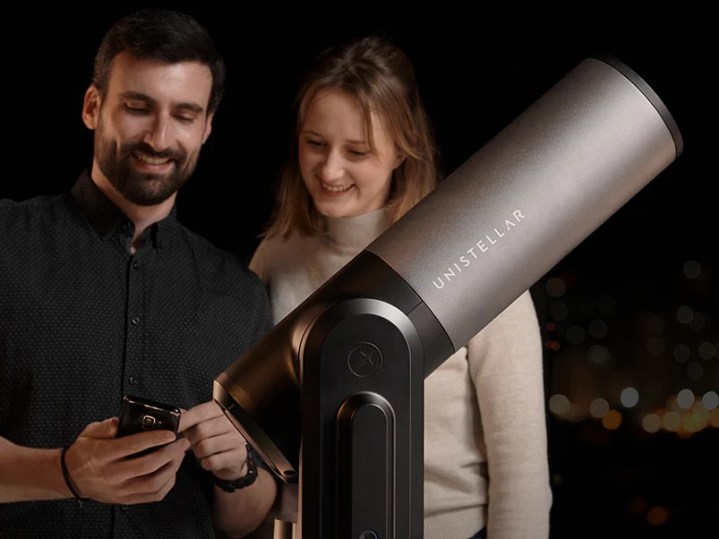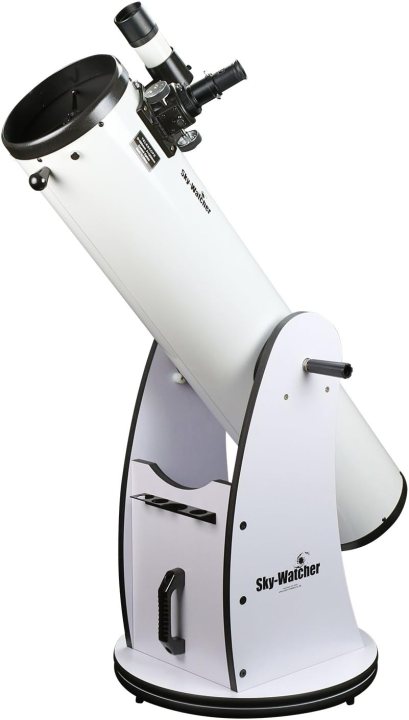
The Best Telescope for Viewing Planets and Galaxies in 2024
- Buy the Explore Scientific ED127 if you want to see planets in our solar system.
-
Buy the Celestron 11069 NexStar 8SE if you a computerized telescope.
-
Buy the Sky Watcher Classic 200 Dobsonian if you want to stargaze from your back yard.
-
Buy the Celestron Advanced VX 8 Edge HD if you want to see deep space objects.
-
Buy the Unistellar eVscope 2 if you want a smart telescope.
Explore Scientific ED127
Best telescope for seeing planets in our solar system

| Pros | Cons |
| Great for viewing planets and some deep space objects | No mount |
| Portable | |
| Great images |
When you’re looking for a telescope powerful enough to image solar system objects, plus some deep space objects, then the Explore Scientific ED127 might be just what you’re looking for. It takes crisp, attractive images thanks to its 127mm aperture, and with an optical tube length of 41.75 inches and weight of 18 lbs it’s portable enough to take out with you if you’re hoping to get set up in a quiet location. It does also have a handle to make carrying easier, but it doesn’t come with a mount so you’ll need to supply your own.
It’s great for looking at the planets, and it can handle some deep sky objects like galaxies, star clusters, and nebulae too. Enthusiasts like this telescope for its bright, well contrasted images and for its reasonable price given its abilities. If you’re hoping to get great views of the rings of Saturn or to admire the striped beauty of Jupiter than this telescope is a great choice.
Celestron 11069 NexStar 8SE
Best computerized telescope

| Pros | Cons |
| Automated system | Mount can be fiddly |
| Catalogue of thousands of objects | Expensive |
| Easy to work with for beginners |
The Celestron NexStar 8SE is a beast of a telescope that will take stunning views of not only objects within the solar system like the moon and planets, but also more distant objects like galaxies and star clusters. With its huge 203mm aperture it’s a powerful piece of kit that can capture views of even faint sky objects, and its altazimuth mount means you can adjust it to whatever direction you need — though the mount can be a little fiddly to operate.
The big advantage this telescope has for newer astronomers, and perhaps for the more experienced crowd as well, is its computerized features. It works with a huge catalogue of over 40,000 celestial objects, so you can punch in the object you want to observe and the telescope can locate and track it for you. It uses a technology called SkyAlign which requires three bright objects to be in view, from which it can align itself and find the objects you want to observe. It has a controller right on the telescope as well, rather than a smartphone app, which might be preferable for those who want an easy to use interface.
How We Chose These Telescopes for Viewing Planets and Galaxies
With the world of astronomy, most home enthusiasts start off with telescopes that are suitable for viewing the moon and some of the brighter planets in the solar system. But if you want to see the dimmer, more distant planets — or particularly if you want to look beyond the solar system and out into deep space — then you need a different kind of tool. Telescopes suited for deep space observations have to be considerably more powerful, and therefore typically more expensive, than the kinds of telescopes used for observing the moon or Mars. But if you’re determined to get a great view of stunning objects like galaxies, star clusters, or nebulae, then there are lots of telescopes out there than can do it. Just remember to consider some of the particular factors that are important for making these kinds of observations.
Aperture size
On a most basic level, a larger aperture generally means more power to observe faint objects. Larger aperture telescopes are typically more capable and therefore more expensive than their smaller brethren, and they tend to be heavier as well. However, getting great views of distant galaxies isn’t only a matter of sheer aperture size. You also need to consider the focal ratio of the telescope, which is the relationship between the aperture size and its focal length. Getting this right is essential to pick up the fainter light coming from these further-off objects. You’ll need a telescope with a low focal ratio, also called a fast telescope, to pick up these faint objects.
Portability and weight
Larger aperture telescopes tend to be heavy pieces of kit. If you’re lucky enough to live in an area with low light pollution and frequently clear skies, then you can get great views right from your backyard. You might even consider getting a Dobsonian style telescope, or a light bucket, which is a heavier piece of kit but offers a big aperture for a smaller price. It’s not such a problem to have a large and heavy telescope if you’re only moving it from your house to your yard.
However, if you like to head out with your telescope on camping trips or hikes, then you need to be more selective. Carting around huge weights often isn’t feasible for long trips, so both size and weight should be considerations for you. You can find powerful telescopes which are more portable, but you might need to compromise on build quality, in terms of thinner and lighter materials used for the telescope.
Smart and automated features
For some, half the joy of getting into astronomy is working to slowly and methodically set up a telescope and get it pointed in just the right direction to find the object they want. A fully manual telescope can be a tactile thing of joy, and can be a connection through generations and an excuse to step away from the tech-driven lives than most of us live. For these people, there’s nothing better than a fully manual telescope. However, other people would just skip through the setup as fast as possible so they can get straight to the observations. For these people, especially those who are new and are just getting into the hobby, then a telescope with smart features or computerized automation can be ideal.
Many higher end telescopes now come with apps which allow you to use your smartphone to identify objects and breeze through setup, or have other computerized features like automatic alignment. Some even include imaging technology within the telescope to take pictures which can then be shared with family or friends or on social media.
This article is managed and created separately from the Digital Trends Editorial team.






